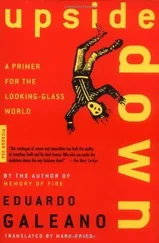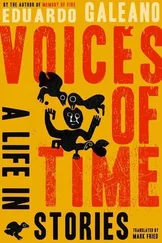
France lost a million and a half men in the First World War.
Four hundred thousand, nearly a third, were unidentified.
In homage to those anonymous martyrs, the government resolved to build the Tomb of the Unknown Soldier.
For burial, they chose at random one of the fallen at the Battle of Verdun.
Somebody noticed the dead soldier was black, a member of the battalion from the French colony of Senegal.
The error was corrected in time.
Another anonymous soldier, this time white-skinned, was buried under the Arc de Triomphe on November 11, 1920. Wrapped in the nation’s flag, he was honored with speeches and medals.

“A criminal is born, not made,” as the Italian physician Cesare Lombroso liked to say, glorying in his ability to identify lawbreakers by their physical traits.
To prove that homo criminalis was predestined to do evil, Brazilian physician Sebastião Leão undertook a study of the prisoners in the Porto Alegre jail. But his research revealed
that the source of crime was poverty, not biology;
that the black prisoners, members of a race considered inferior,
were as intelligent as the others or more so;
that the mulatto prisoners, members of a race considered weak and degraded, reached old age hale and hearty;
that the verses written on the walls were enough to prove that not all criminals were unintelligent;
that the physical characteristics which Lombroso attributed to friends of the knife, prominent chin, protruding ears, long eyeteeth, were less common in jail than on the outside;
that beardlessness could not be a trait of society’s enemies as Lombrosoclaimed, because among the many prisoners in Porto Alegre, ten at most had little facial hair;
and that the steamy climate did not encourage lawbreaking, for the crime rate did not rise in summer.

In 1869, the Suez Canal made navigation possible between two seas.
We know that Ferdinand de Lesseps was the project’s mastermind,
that Said Pasha and his inheritors sold the canal to the French and the English for practically nothing,
that Giuseppe Verdi composed “Aida” to be sung at the inaugural ceremony,
and that ninety years later, after a long and painful fight, President Gamal Abdel Nasser succeeded in making the canal Egyptian.
Who recalls the hundred and twenty thousand prisoners and peasants, sentenced to forced labor, who died building it, murdered by hunger, exhaustion, and cholera?
In 1914, the Panama Canal sliced open a channel between two oceans.
We know that Ferdinand de Lesseps was the project’s mastermind,
that the construction company went belly up in one of the most earth-shattering scandals in French history,
that President Teddy Roosevelt of the United States seized the canal and all of Panama along with it,
and that sixty years later, after a long and painful fight, President Omar Torrijos succeeded in making the canal Panamanian.
Who recalls the West Indian, East Indian, and Chinese workers who were lost building it? For every kilometer, seven hundred died, murdered by hunger, exhaustion, yellow fever, and malaria.

Tradition required that the umbilical cords of newborn girls be buried under the ashes in the kitchen, so that early on they would learn a woman’s place and never leave it.
When the Mexican Revolution began, many left their place, but they took the kitchen with them. For better or for worse, out of desire or obligation, they followed their men from battle to battle. They carried babies hanging from their breasts, and pots and pans strapped to their backs. And munitions too: it was women’s job to supply tortillas for the belly and bullets for the gun. And when men fell, women took up their weapons.
On the trains, men and horses rode in the cars. Women were on the roof, praying to God it would not rain.
Without the women who came from country and town, who followed the fighters, who rode the rails, who treated the wounded, who cooked the food, who fought the enemy, who braved death, the revolution never would have happened.
None of them got a pension.
FORBIDDEN TO BE A PEASANT

While the euphoric horse thief Pancho Villa set the north of Mexico aflame, the morose muleteer Emiliano Zapata led the revolution in the south.
All over the country, peasant farmers rose up in arms:
“Justice went up to heaven. You won’t find it here,” they said.
They fought to bring it back.
What else could they do?
In the south, sugar reigned behind its castle walls, while corn eked out a living on the old lava flows. The world market brought the local market to its knees, and the usurpers of land and water advised the men they had dispossessed:
“Plant in flower pots.”
The rebels were men not of war but of the earth, and they would suspend the revolution to plant or to harvest.
Sitting in the shade of laurel trees among neighbors who talked of cocks and horses, Zapata said little and listened a lot. But this taciturn man managed to stir up settlements far and wide with the good news of his land reform.
Never was Mexican society so changed.
Never was Mexican society so punished for changing.
A million dead. All or nearly all of them peasants, even if some wore uniforms.

National Palace, Mexico City, December 1914.
The countryside, risen in revolution, invades the urban world. The North and the South, Pancho Villa and Emiliano Zapata, conquer Mexico City.
While their soldiers, lost like blind men in a gunfight, wander the streets asking for food and dodging vehicles never before seen, Villa and Zapata enter the seat of government.
Villa offers Zapata the president’s golden chair.
Zapata turns him down.
“We ought to burn it,” he says. “It’s bewitched. When a good man sits here, he turns bad.”
Villa laughs as if it were a joke, flops his great humanity over the chair, and poses for Augustín Víctor Casasola’s camera.
At his side Zapata appears distant, aloof, while he gazes at the camera as if it shoots bullets, not pictures, and with his eyes he says:
“Nice place to leave.”
And in no time at all, the leader of the South returns to the little town of Anenecuilco, his cradle, his sanctuary, and from there he continues directing the recovery of stolen land.
Villa does not take long to do the same:
“This village is too big for us.”
Those who later sit in the coveted seat with the gold-leaf design preside over the butchery that reestablishes order.
Zapata and Villa, betrayed, are assassinated.

He was born, they say, with a little hand tattooed on his chest.
He died with seven bullet holes in his body.
The assassin received fifty thousand pesos and the rank of brigadier general.
The assassinated received a multitude of peasants with hats in hand, who came to pay their respects.
Читать дальше



















